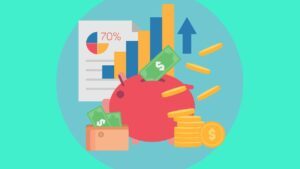An overdraft is a financial tool that allows account holders to withdraw more money than is available in their account, preventing declined transactions. Average overdraft fees in the United States stand at around $35 per occurrence, as reported by the CFPB.
While overdrafts provide a convenient safety net, their high fees and potential to contribute to a cycle of debt require careful consideration.
Building an emergency fund, using credit cards responsibly, setting up account alerts, and considering personal loans are alternatives to frequent overdraft usage.

What is an Overdraft?
An overdraft is a financial lifeline offered by banks that permits an account holder to withdraw more money than is available in their account, resulting in a temporary negative balance.
In practical terms, an overdraft acts as a financial cushion, preventing declined transactions and bounced checks when funds are insufficient. Overdrafts can be triggered by various transactions, including debit card purchases, ATM withdrawals, or checks.
Should I Use My Overdraft?
On the positive side, overdrafts can spare you the embarrassment of declined transactions and potential fees from merchants. However, an overreliance on overdrafts may lead to a cycle of debt, as studies have shown that a small percentage of account holders contribute significantly to overdraft fees.
If unexpected expenses arise and you can promptly repay the overdraft, it may be a reasonable option. Conversely, consistently relying on overdrafts for basic expenses may necessitate a reassessment of your budget and spending habits.
What are the Pros and Cons of Using an Overdraft?
Pros
Avoidance of Fees and Penalties: Utilizing an overdraft can help you dodge costly fees and penalties imposed by merchants for declined transactions or by the bank for bounced checks, as highlighted by the CFPB’s report.
Convenience: Overdrafts provide a convenient solution for bridging short-term financial gaps, particularly during emergencies or unforeseen circumstances.
Maintaining Financial Reputation: Responsibly using an overdraft can contribute to maintaining a positive financial reputation, preventing negative impacts on your credit score.
Cons
High Fees: Overdraft fees can be steep, with the average fee standing at $35 per occurrence according to the CFPB. This can have a significant impact on your finances, especially if overdrafts happen frequently.
Debt Cycle: The Pew Charitable Trusts’ study indicates that overreliance on overdrafts can result in a cycle of debt, as fees accumulate, making it challenging to restore your account to a positive balance.
Impact on Credit Score: While overdrafts do not directly affect your credit score, prolonged unpaid overdrafts can lead to debt collection actions, negatively impacting your credit.
How Can I Pay Off My Overdraft Quickly?
Finding yourself in the throes of an overdraft can be stressful, but there are strategies to swiftly pay off the negative balance and regain financial stability. Considering the high fees associated with overdrafts, addressing the situation promptly is crucial to avoid further financial strain.
- Prioritize Repayment: As soon as you become aware of the overdraft, make it a priority to repay the negative balance. This can help prevent the accumulation of additional fees and mitigate the impact on your overall financial health.
- Utilize Extra Income: If you receive any windfalls, such as a tax refund, work bonus, or monetary gifts, consider allocating a portion of these funds towards repaying the overdraft. Applying unexpected income to outstanding debts can expedite the repayment process.
- Create a Repayment Plan: Assess your monthly budget to determine how much you can comfortably allocate towards repaying the overdraft. Establishing a repayment plan will help you systematically reduce the negative balance over time.
- Cut Unnecessary Expenses: Temporarily trimming discretionary spending can free up additional funds for overdraft repayment. Evaluate your expenses and identify areas where you can cut back until the overdraft is fully repaid.
- Negotiate with the Bank: In some cases, banks may be willing to negotiate fees or offer a temporary reprieve on additional charges. Contact your bank to discuss your situation and explore any potential options for reducing the financial burden.
- Consider a Low-Interest Loan: If the overdraft amount is substantial, you may explore the option of obtaining a low-interest personal loan to consolidate and pay off the overdraft. This approach can potentially save you money on interest compared to the ongoing overdraft fees.
- Automate Repayments: Set up automatic transfers from your checking account to your overdraft to ensure a consistent and timely repayment process. This can help you stay on track and avoid missing payments.
What are Some Alternatives to an Overdraft?
Personal Loan: In situations requiring a larger sum, a personal loan with a fixed interest rate or a payday loan may be a more cost-effective solution than continuous overdraft usage.
Emergency Fund: The importance of having an emergency fund is underscored by overdraft statistics. Savings set aside for unexpected expenses provide a financial cushion without incurring fees.
Credit Cards: Responsible use of credit cards, with lower interest rates compared to overdraft fees, can serve as a flexible line of credit for emergencies.
Account Alerts: Many banks offer alert services, as emphasized by the CFPB, notifying you when your balance is low, helping you avoid overdrafts.